Winter is the perfect time to get cozy, but it turns into an icy nightmare when we see the familiar snow-dusted driveway sight that greets us as soon as we walk out of our homes.
One trusted ally that almost all homeowners have during this season is driveway salt. However, you may have questions about its effectiveness and environmental impact.
In this article, we’ll answer your questions on how they work and how effective they are. We’ll also discuss the different types of salt you can use to make sure you get the best for your driveway.
How does driveway salt work?
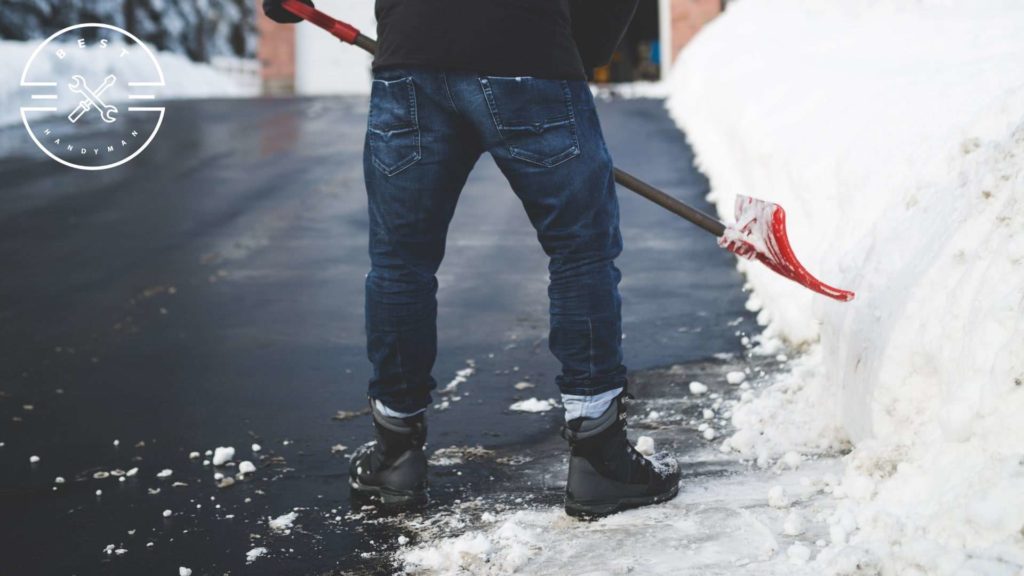
Salting the driveway works by altering the chemical structure of water and lowering its freezing point.
This means, unlike popular belief, salt actually doesn’t melt ice; it just lowers the freezing point. When the freezing point is lower than normal, ice that’s already melting will have a hard time freezing again.
It’s worth noting, though, that the effectiveness of salt in preventing ice buildup is still highly dependent on the temperature in your region. Ice will still build up if the temperature falls below the freezing point.
Pros and Cons of Using Salt for Driveways

The most commonly used deicers for homes are sodium chloride, calcium chloride, and magnesium chloride. Each has its own benefits and drawbacks that can affect your decision-making.
Types of Driveway Salt
Sodium Chloride (Rock Salt)
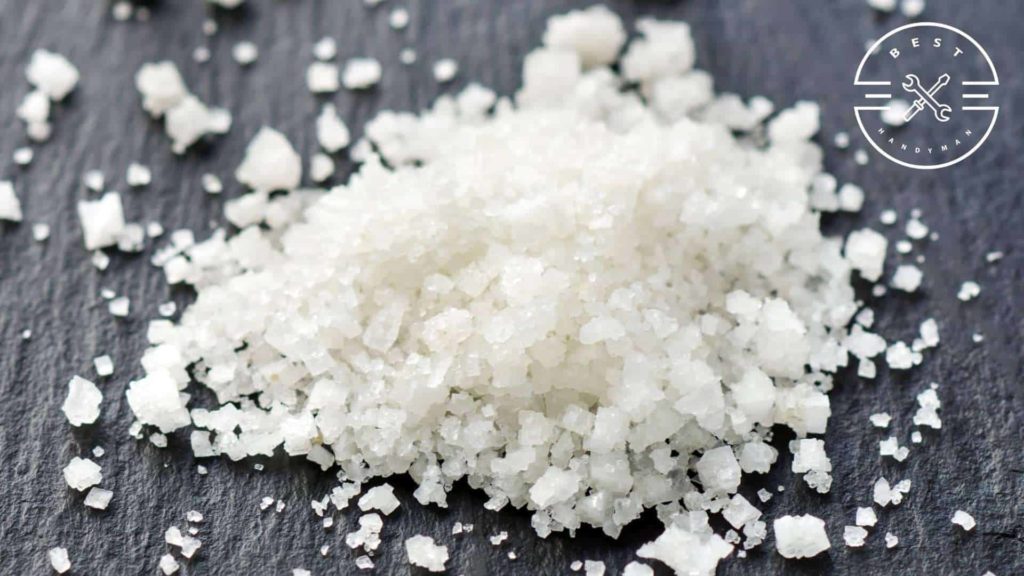
Sodium chloride, commonly known as rock salt, is the most widely used and readily available driveway salt.
It is effective at lowering the freezing point to as low as 0°F (-17°C). Rock salt is relatively cheap, so it’s the most popular choice for homeowners.
However, it can be harmful to concrete driveways and even the environment. If you choose rock salt, use it sparingly and avoid overapplication.
Calcium Chloride
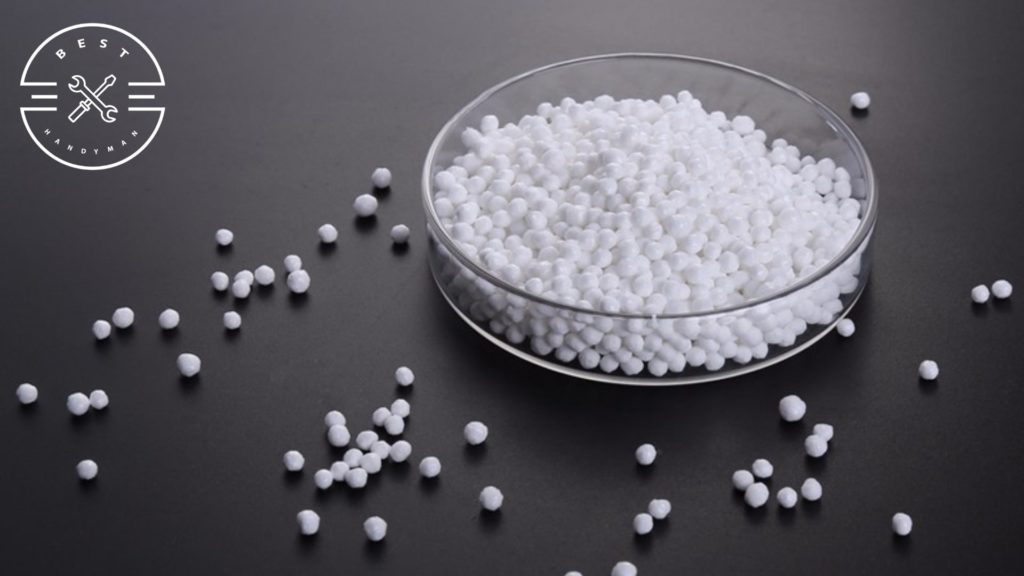
Calcium chloride can lower the freezing point to -25°F (-32°C), depending on the amount applied on the driveway. It works faster and uses less amount of material compared to rock salt.
It is more expensive than rock salt but is a lot more effective at lowering temperatures. This is the best option for people who live in extremely cold regions, as rock salt may not provide much help.
Magnesium Chloride
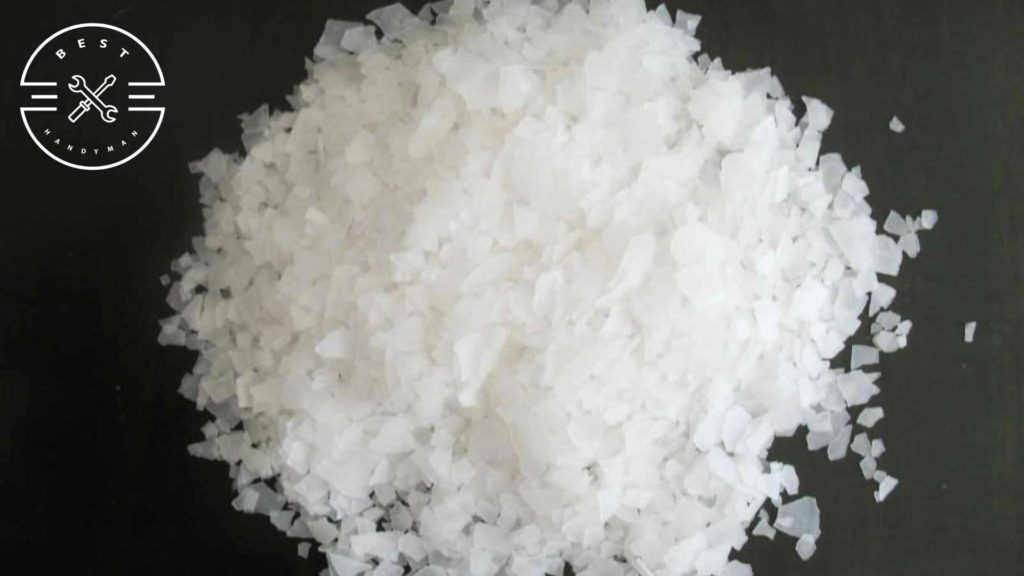
Magnesium chloride is not as powerful as calcium chloride in reducing the freezing point, but it’s gentler to concrete surfaces. It’s not as corrosive and has a lower impact on plants, making it a more environmentally friendly choice.
Magnesium chloride can lower the temperature to -13°F (-25°C), which is still better than sodium chloride. This is the better option if your winters are not extremely cold.
Potassium Acetate
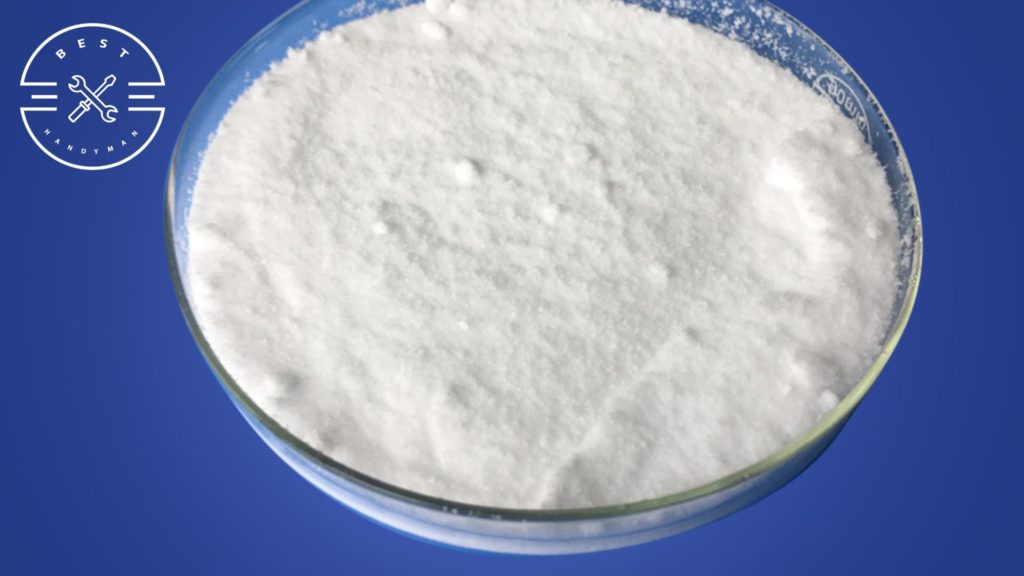
Potassium acetate is another salt that’s excellent for deicing and preventing ice buildup on surfaces.
It’s the most eco-friendly solution among all types of salt and also the least damaging to the surface, making it the best choice for airport runways where repair for possible damage can be expensive.
That said, it’s slightly less effective than other types of salt. It can only work in an environment with temperatures of 0°F (-17°C), which is just the same as rock salt.
It’s also extremely costly, so it’s not advisable for houses.
Which type of salt should you use?
Affordability
Sodium chloride is the most affordable option among the three. A 50 lb bag typically costs $6 to $7, which is a lot cheaper compared to $16 to $17 calcium chloride.
Magnesium chloride is the most expensive of the three, costing $21 to $24 for every 50 lb bag. This can be quite costly for bigger driveways since they need more salt.
Effectiveness
However, in terms of effectiveness, sodium chloride tends to be the least effective when it comes to lowering the freezing point. It’s only effective when the temperature is 0°F (-17°C) or above and maybe not helpful in extremely cold regions.
Magnesium chloride is slightly more effective, lowering the temperature to -13°F or -25°C. However, if the temperature in your place is really low, calcium chloride is the most effective.
Calcium chloride can lower the temperature to -25°F or -32°C, making it one of the most effective deicers for cold regions.
Damage to Concrete
Calcium chloride also can also lower the freezing point of water much faster than sodium chloride.
That said, it poses potential damage to concrete when used excessively. It’s acidic in nature, so it naturally weakens the concrete and makes it more prone to cracks.
It is, however, slightly less damaging compared to sodium chloride, which can also speed up the deterioration of asphalt driveways.
Among the three, magnesium chloride is the least damaging to concrete. However, it can still cause damage if used in large amounts for an extended period of time.
Eco-friendliness
Magnesium chloride is also the most eco-friendly option compared to sodium chloride and calcium chloride. As long as it’s not used in large amounts, it doesn’t pose much damage to the soil and plants.
Sodium chloride, on the other hand, can cause significant harm to your lawn and other vegetation near your driveway. Even though it’s not applied directly on the lawn, once the ice melts and turns into water, it will run off onto the lawn and potentially ruin it.
When to salt the driveway?

The best time to apply salt is right before the snow starts falling. This will prevent the snow from freezing on the actual surface of the driveway and make it easier for you to remove the snow.
However, snow may start falling before the forecasted time, so pre-salting isn’t always possible. It’s best to apply the salt during or immediately after a light snowfall in this situation.
This will immediately get rid of the snow that has already fallen and prevent future snow from sticking to the surface. But remember to remove as much snow as possible to help the salt work faster.
Additionally, you should salt the driveway after shoveling snow off the surface in case you’re unable to salt it before a heavy snowfall. This prevents the remaining water and snow from freezing again.
How to use driveway salt?
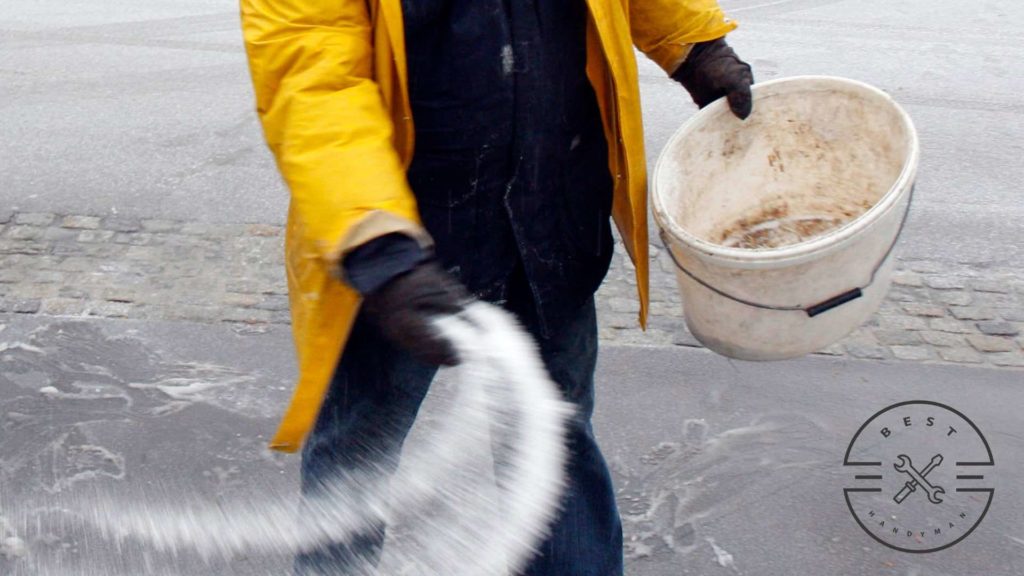
Step 1: Choose the salt you’ll use and prepare it.
Consider the temperature in your region before buying salt, as certain types will not work for places with extremely harsh winters.
Rock salt can typically work if your city’s temperature doesn’t get lower than 0°F. If your city’s temperature has a history of dropping below that, it’s best to try calcium chloride or magnesium chloride.
Salts may become scarce when a snowstorm is approaching, as everyone tries to buy them. This is why we recommend stocking some at least a month before winter comes to avoid the hassle of looking for one.
Step 2: Wear protective gear
Wear gloves and non-slip shoes before heading to the driveway and handling the salt. This protects you from possible skin irritation the salt may cause.
Step 3: Prepare the driveway
If light snowfall has already happened, it’s best to clear the driveway of any loose snow or debris using a shovel. Removing the loose snow allows the salt to make direct contact with the surface, preventing future snowfall from sticking.
Step 4: Evenly spread the salt across the driveway
It’s important that the salt is evenly spread to ensure that the entire driveway is protected from ice buildup.
Use the amount advised by the manufacturer to ensure that you don’t cause excessive damage to your property or the environment. If there’s no written instruction, a good rule of thumb is 15 ounces for every 20 feet of driveway.
Step 5: Let the salt sit and work
After applying the salt, give it some time to work. The salt will attract moisture and begin lowering the freezing point of the water.
Depending on the temperature and the severity of the ice, it may take some time for the salt to show its effects.
Step 6: Remove the snow
Once the snow is melted, shovel them off the driveway to make it safer.
It’s also essential to apply salt again after winter to make sure that ice won’t build up again on the driveway.




